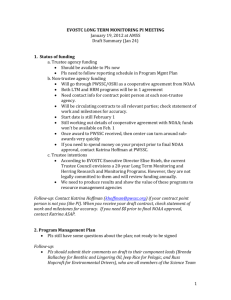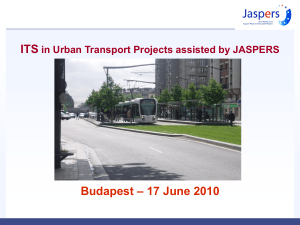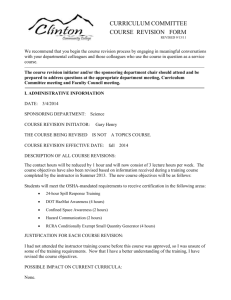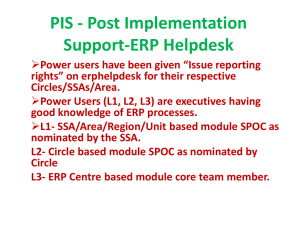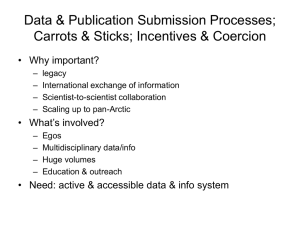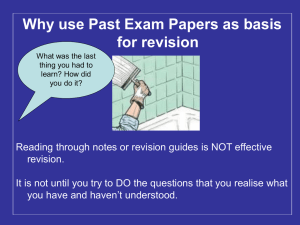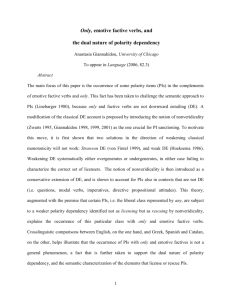NFPA 72 PI Task Group Review Instructions New Process Orientation
advertisement
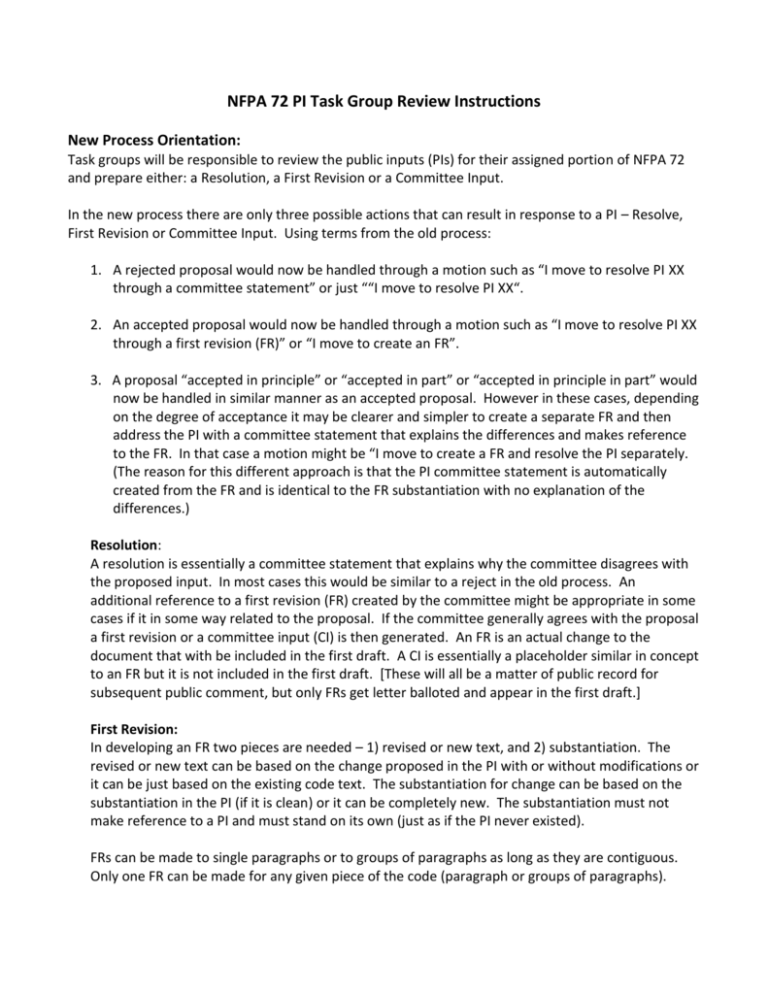
NFPA 72 PI Task Group Review Instructions New Process Orientation: Task groups will be responsible to review the public inputs (PIs) for their assigned portion of NFPA 72 and prepare either: a Resolution, a First Revision or a Committee Input. In the new process there are only three possible actions that can result in response to a PI – Resolve, First Revision or Committee Input. Using terms from the old process: 1. A rejected proposal would now be handled through a motion such as “I move to resolve PI XX through a committee statement” or just ““I move to resolve PI XX“. 2. An accepted proposal would now be handled through a motion such as “I move to resolve PI XX through a first revision (FR)” or “I move to create an FR”. 3. A proposal “accepted in principle” or “accepted in part” or “accepted in principle in part” would now be handled in similar manner as an accepted proposal. However in these cases, depending on the degree of acceptance it may be clearer and simpler to create a separate FR and then address the PI with a committee statement that explains the differences and makes reference to the FR. In that case a motion might be “I move to create a FR and resolve the PI separately. (The reason for this different approach is that the PI committee statement is automatically created from the FR and is identical to the FR substantiation with no explanation of the differences.) Resolution: A resolution is essentially a committee statement that explains why the committee disagrees with the proposed input. In most cases this would be similar to a reject in the old process. An additional reference to a first revision (FR) created by the committee might be appropriate in some cases if it in some way related to the proposal. If the committee generally agrees with the proposal a first revision or a committee input (CI) is then generated. An FR is an actual change to the document that with be included in the first draft. A CI is essentially a placeholder similar in concept to an FR but it is not included in the first draft. [These will all be a matter of public record for subsequent public comment, but only FRs get letter balloted and appear in the first draft.] First Revision: In developing an FR two pieces are needed – 1) revised or new text, and 2) substantiation. The revised or new text can be based on the change proposed in the PI with or without modifications or it can be just based on the existing code text. The substantiation for change can be based on the substantiation in the PI (if it is clean) or it can be completely new. The substantiation must not make reference to a PI and must stand on its own (just as if the PI never existed). FRs can be made to single paragraphs or to groups of paragraphs as long as they are contiguous. Only one FR can be made for any given piece of the code (paragraph or groups of paragraphs). Thus when reviewing multiple PIs for a given paragraph or groups of paragraphs it is important to make sure that a collective approach is taken – consider them all before you decide what the final change should be. It is important to realize that when an FR is created based on a PI or group of PIs the committee statement for the PI(s) is automatically generated using a reference to the FR and its substantiation. So, if the committee wants to address the PI’s proposed change or substantiation in a different or more extensive manner, then the PIs should be resolved separately with perhaps an added reference to the FR as noted previously under “Resolution”. Task Group Process: Task groups must come to the meeting with one of three things prepared for each PI or group of PIs: a resolution, a first revision or a committee input fully prepared for consideration by the full committee. Two documents have been enclosed: 1) a revised list of PIs (including some reorganization and annotations to help the process) and 2) a TG review form. Completed TG review forms will be the means for the task group to present their work. The completed review form must contain the following: For each PI or group of related PIs – the code section(s), PI number(s) and either a resolution statement or an FR (or CI). IF an FR (or CI) is selected then revised/new text is needed along with the substantiation. Note that multiple PIs for a given paragraph or group of paragraphs may need to be handled with a resolution for one or more and an FR (or CI) for one or more. This is because some PIs may essentially be rejected while others are addressed through the FR. If a group of PIs are resolved (“rejected”) the committee statement needs to respond to the substantiation of each PI. It may actually be easier to handle them individually in cases where the submitters proposed change/rationale is different. In preparing revised/new text for an FR is important to show it in a manner that will help facilitate presentation to the committee. The use of legislative text may be helpful in this regard – if this is method is used, make sure the changes are shown true relative to the current code text – not the submitters text. In some cases the use of plain text may be better. Task groups will meet by teleconference or web conference arranged by NFPA. Multiple meetings may be needed to get through all this material. It is requested that each task group prepare a single electronic file for all their work labeled “TG1 First Draft rev 0.doc” (the revision number should kept up to date as the task group works through different versions until the day of the meeting. Please present your file to the staff liaison the morning of the meeting (if not before).

